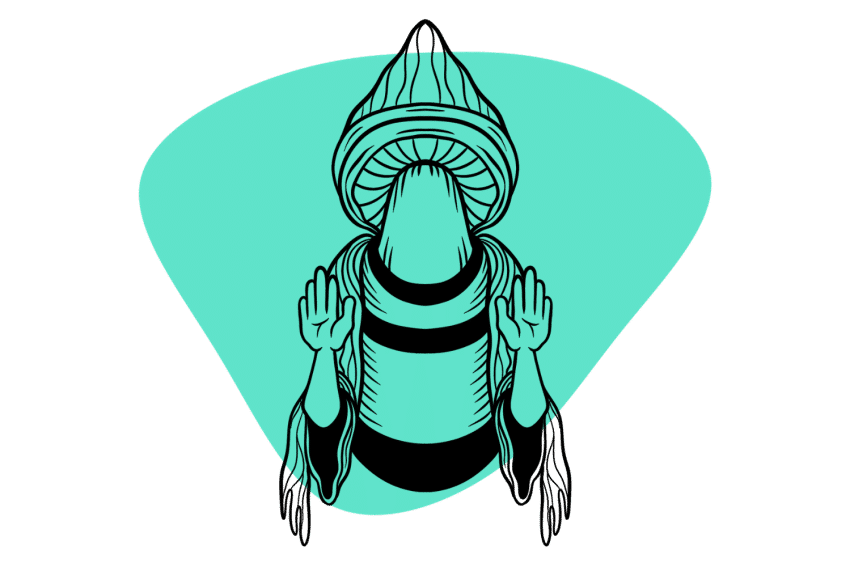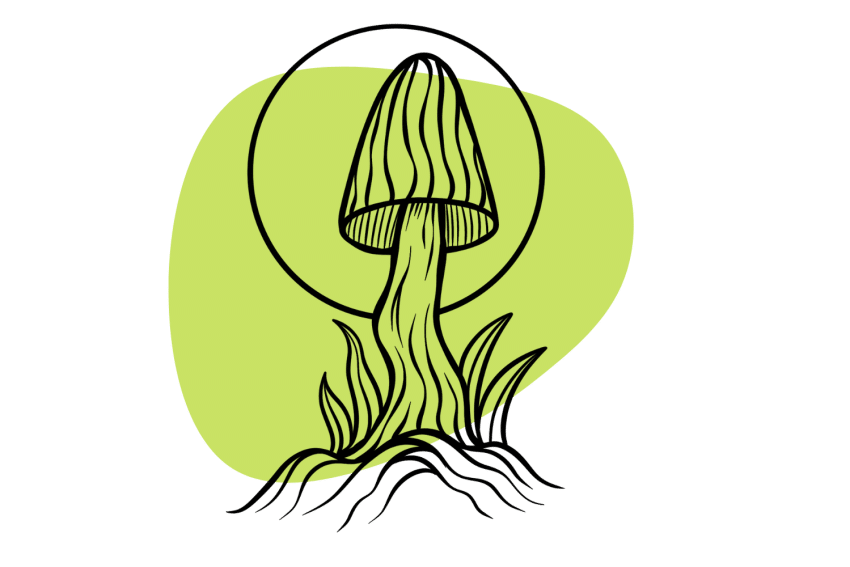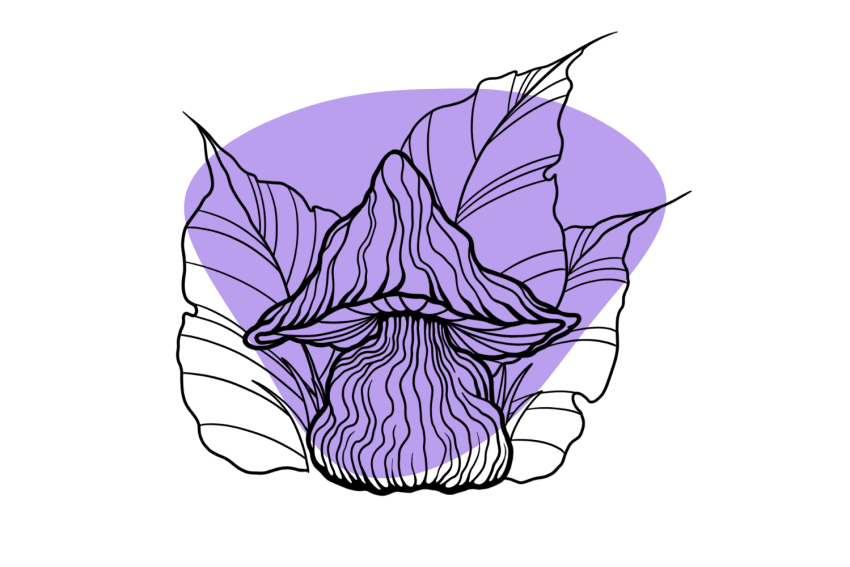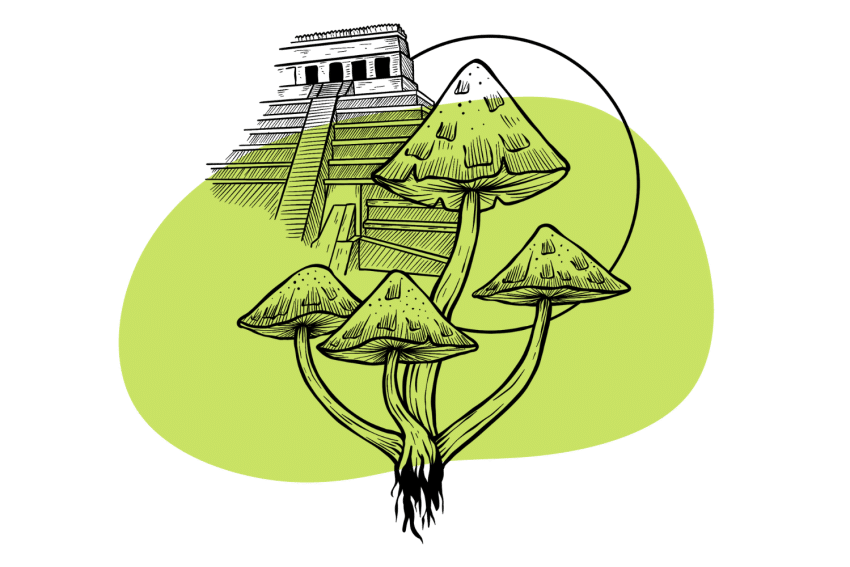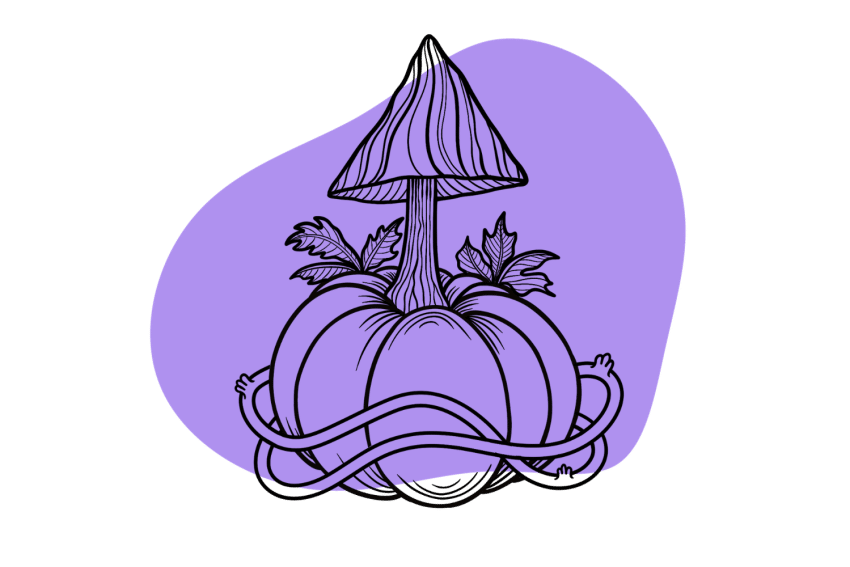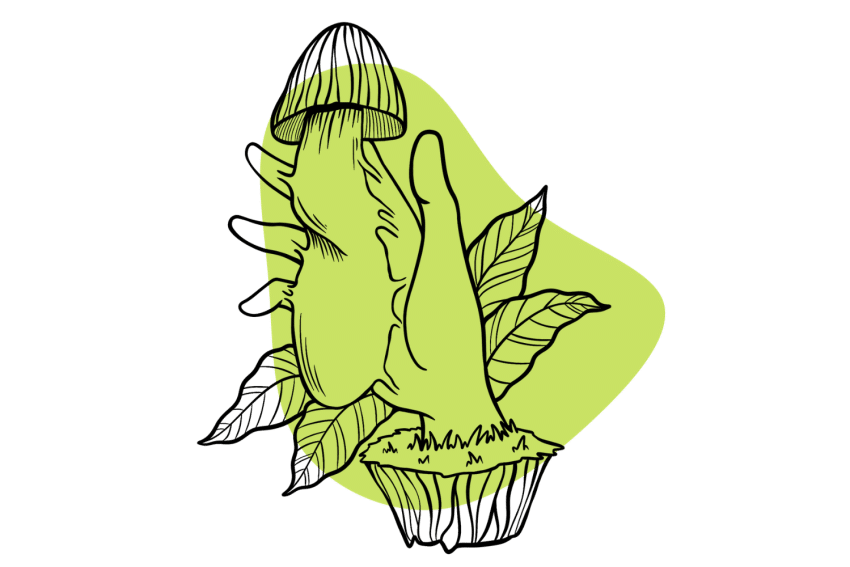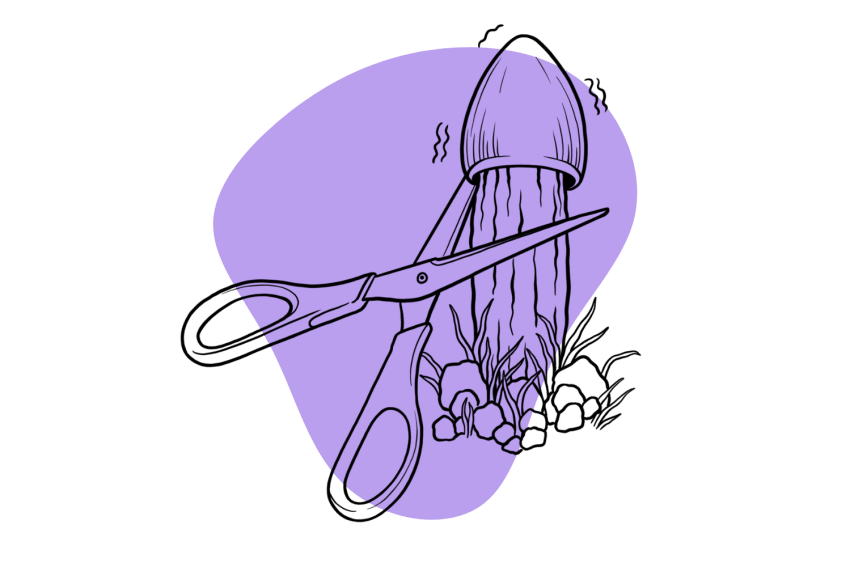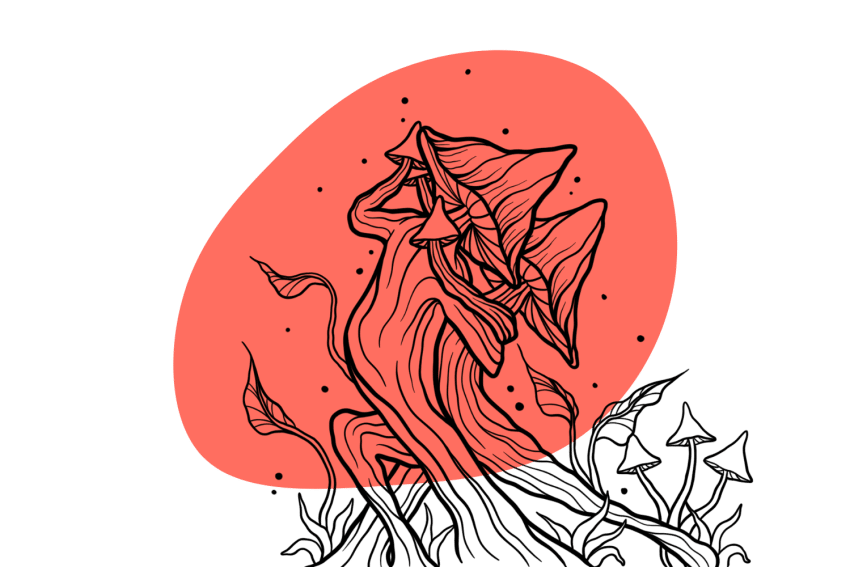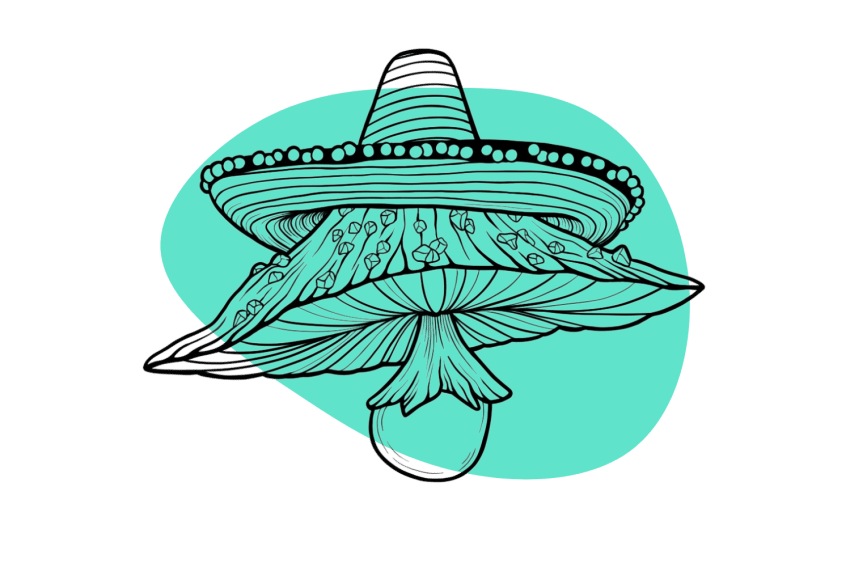Tapalpa Strain: A Mexican Cube That’s “Small but Mighty”
Never judge a book by its cover.
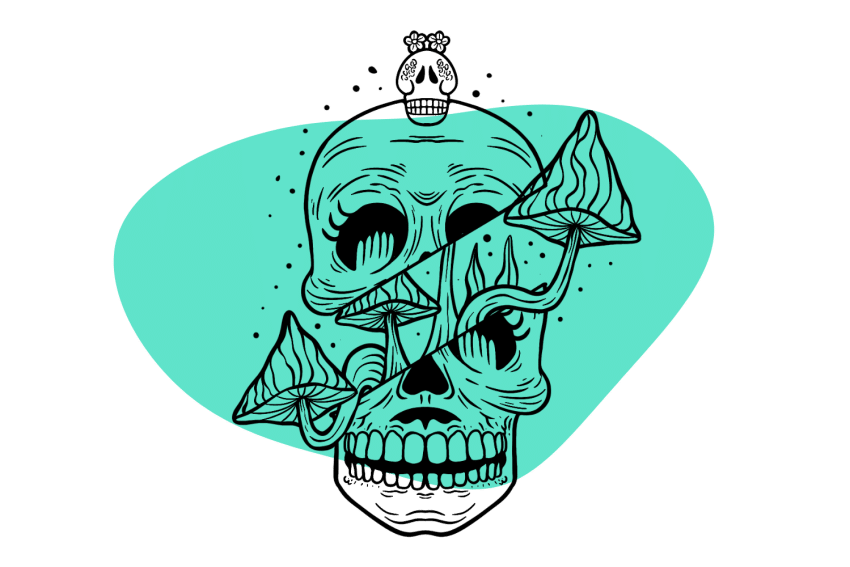
Tapalpa is a strain of Psilocybe cubensis that was discovered in Mexico. It’s been circulating the western spore market for a while now and is rather popular. The fruits of Tapalpa are small but mighty. They have above-average potency and tend to grow in dense clusters — making large yields possible over the span of several flushes.
Tapalpa is noted to be an aggressive colonizer and is easy to grow thanks to its resistance to bacteria and mold growth.
In this article, we’ll look at the Tapalpa strain in depth by:
- Uncovering the history of the strain
- Assessing its potency and effects
- Looking at Tapalpa’s genetic relatives
- Where to buy Tapalpa spore samples from
- How the strain is best cultivated
We’ll also look at strains that share similar qualities for the beginner who wants to get into the world of mushroom cultivation.
What Are Tapalpa Shrooms?
The Tapalpa strain was acquired and developed by the team at SporeLab. The original wild spore prints were donated to the vendor by an amateur mycologist based in Guadalajara. The strain gets its name from its place of discovery — Tapalpa, Mexico.
The strain has been circulating for several years through the hands of passionate amateur mycologists. However, it was not until relatively recently (the past four years or so) that the strain made it to the more major spore vendors. It’s slowly growing in popularity for its resilient nature.
Tapalpa is easy to grow thanks to its contamination resistance and can grow in an unoptimized environment. It’s a reliable strain that colonizes quickly and is capable of producing several prolific flushes. Even the complete beginner will do well with Tapalpa genetics.
The mushrooms produced by this strain have bulbous golden-brown caps and white stems. The caps also produce a unique speckle of white spots similar to those on the Mazatapec strain (also a Mexican variety of P. cubensis).
Tapalpa is said to be stronger than the average cubensis strain, but the potencies can fluctuate widely from one harvest to the next.
Overall, Tapalpa is a well-rounded strain that can be approached by cultivators of all experience levels. Mushrooms can be produced quickly without much in the way of equipment, knowledge, space, or time.
Tapalpa Specs
| Potency | Above Average |
| Cultivation | Easy |
| Species | Psilocybe cubensis |
| Substrate Recommendation | BRF & Vermiculite, Coco Coir & Vermiculite |
| Sold By | Spores 101 (🇺🇸/🇨🇦), Miracle Farms (🇺🇸/🇨🇦), Sporeslab (🇨🇦), The Magic Mushrooms Shop (🇪🇺) |
History of the Tapalpa Strain
The Tapalpa strain was acquired by “Captain Max Mushroom” from an amateur mycologist near Guadalajara, Mexico. The spores were then brought to the United States, where they were cultivated and spread throughout the magic mushroom community through the vendor SporeLab.
The first sample was collected close to the town of Tapalpa, near Guadalajara. This is an alpine town that stands 6400 feet (1,950 meters) above sea level. No one knows the habitat where it was collected, but it was likely found growing in the abundant pastures of the area.
Other than this limited information, we don’t know much more about the history and origins of the Tapalpa strain specifically. However, Mexico has a rich history of psychedelic use. Magic mushrooms, including Tapalpa, could’ve been used in the area as far back as the 13th century.
Tapalpa Potency & Psilocybin Content
Tapalpa mushrooms have above-average potency. However, there’s little information about the exact tryptamine percentages this strain is capable of producing.
Unfortunately, Tapalpa has yet to appear in the Oakland Hyphae Psilocybin Cup. However, one of its possible relatives was featured in the Spring 2021 edition of the cup. Although we can’t say for sure whether Tapalpa’s genetic relatives share similar tryptamine levels, it gives us some idea of how potent the strain could be.
Tapalpa shares several similarities to the Mazatapec strain. Two samples of Mazatapec were entered into the Oakland Hyphae Spring 2021 Psilocybin Cup and did remarkably well.
- Sample 1 — cultivated by “The Healing Hustlas,” produced 0.88% psilocybin and 0.11% psilocin (0.99% total tryptamines)
- Sample 2 — cultivated by “Inoculate Your Mind,” produced 0.94% psilocybin and 0.20% psilocin — (1.15% total tryptamines)
Those are some impressive stats, and if Tapalpa shares more than just its looks with Mazatapec, it could be just as potent.
Tapalpa Genetic Relatives
The Tapalpa strain was found growing somewhere close to Guadalajara in Mexico. Although we don’t know the exact genetic relatives of the strain, there are a few Mexican cubensis mushrooms that could be related.
Here are some of Tapalpa’s likely relatives:
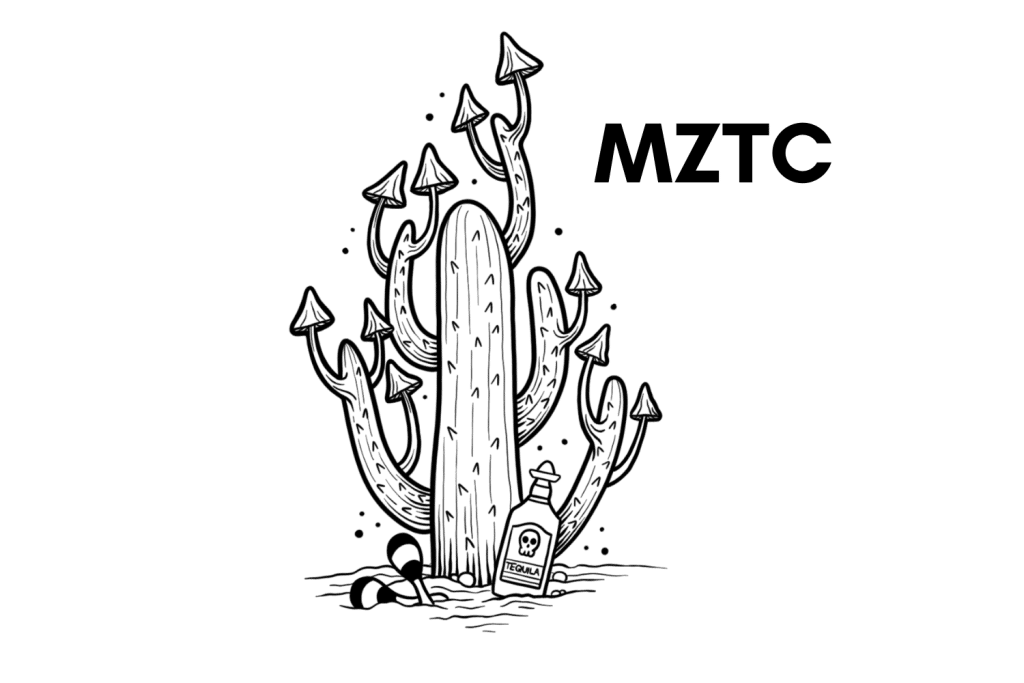
1. Mazatapec (MZTC)
The Mazatapec strain was one of the first strains of Psilocybe cubensis to be brought back to the West. Robert Gordan Wasson, who was traveling in the Sierra Mazateca area of Mexico, supposedly discovered and brought back the first sample.
This strain has bulbous caps of a creamy golden-brown color. The stems are long and pale, and the mushrooms are typically 10 to 15 centimeters from base to cap.
This is an above-average to potent strain with great contamination-resistant qualities, making it hassle-free to cultivate. It’s a fast colonizer and fruiter, which makes it popular among home and commercial growers that want to produce a large number of mushrooms.
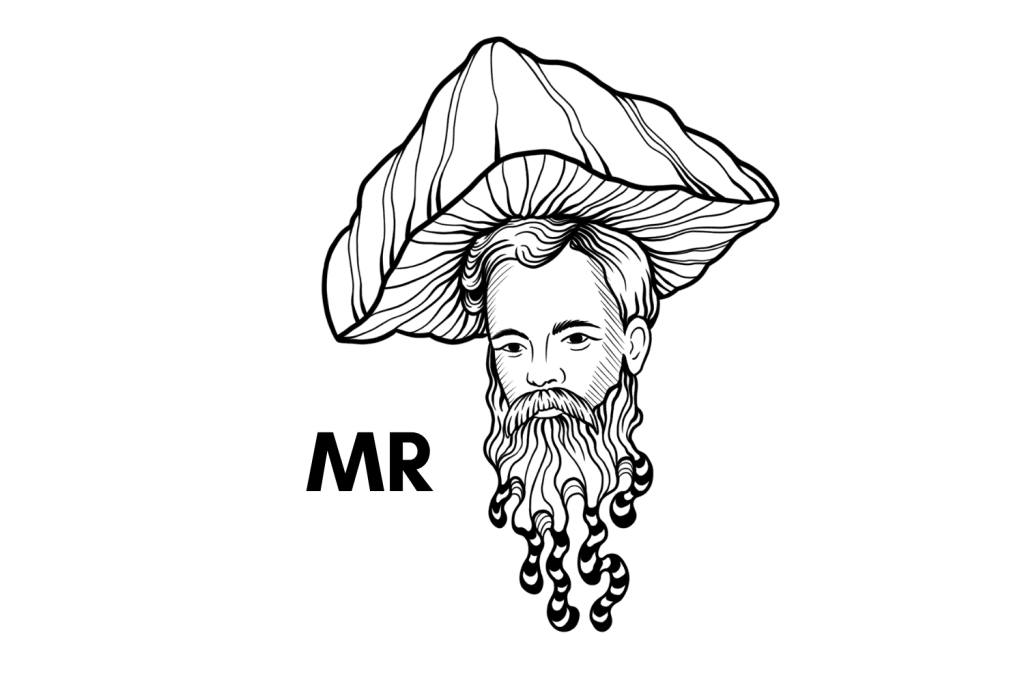
2. Matias Romero (MR)
Matias Romero is a Mexican strain that’s named after its place of discovery — the village of Matias Romero. It shares several qualities with the Tapalpa strain, but it isn’t as easy to cultivate because it can be susceptible to mold growth and bacteria.
This strain is noted for having watery stems and caps, meaning that after drying, the mushrooms can lose a lot of their size and weight. It’s resilient to high temperatures and humidity but prone to aborts if the ambient air is too cool or there’s a decrease in moisture.
Matias Romero isn’t recommended for the beginner cultivator. However, for someone with more experience and knowledge of sterile practice and environmental stability, it can be a rewarding strain to grow.
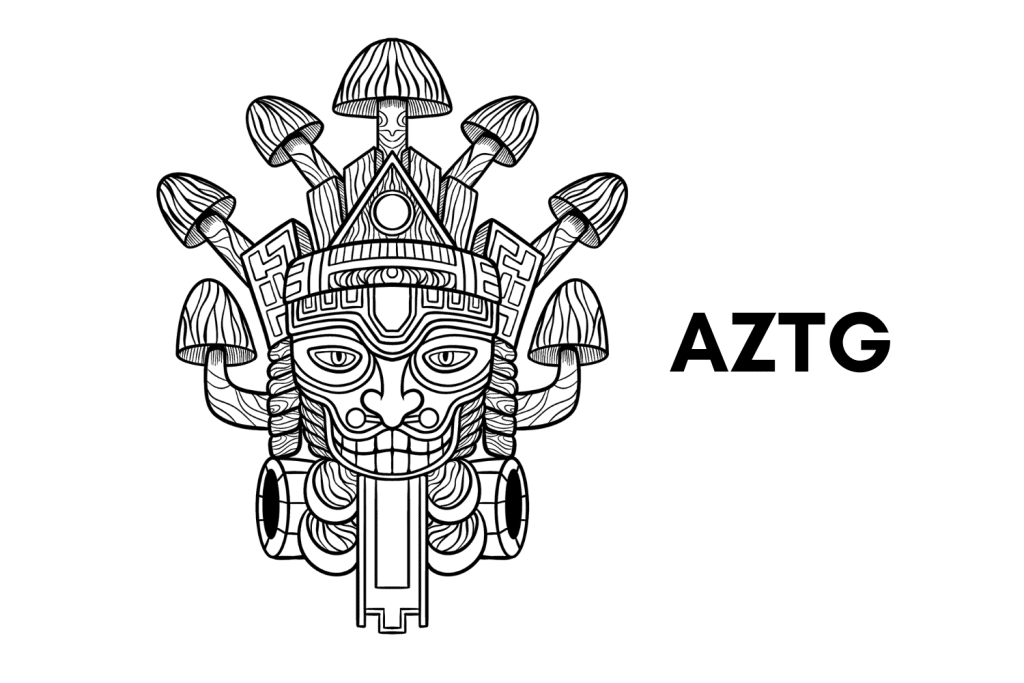
3. Aztec God (AZTG)
Aztec God is a shroom that was discovered growing in Central America. Its name comes from the Aztec tribes that are believed to have consumed these mushrooms during ceremonies, rituals, and even sacrifices. This ancient Psilocybe cubensis strain could’ve been used by people as early as the 13th century.
The fruiting bodies have above-average potency and are medium-sized. Aztec God can be identified by its chestnut-colored round cap and thin wavy stems.
This strain shouldn’t be approached by a complete beginner. It can be sensitive to environmental conditions and susceptible to mold growth. However, if the right growing conditions are met, you can get good yields of potent shrooms.
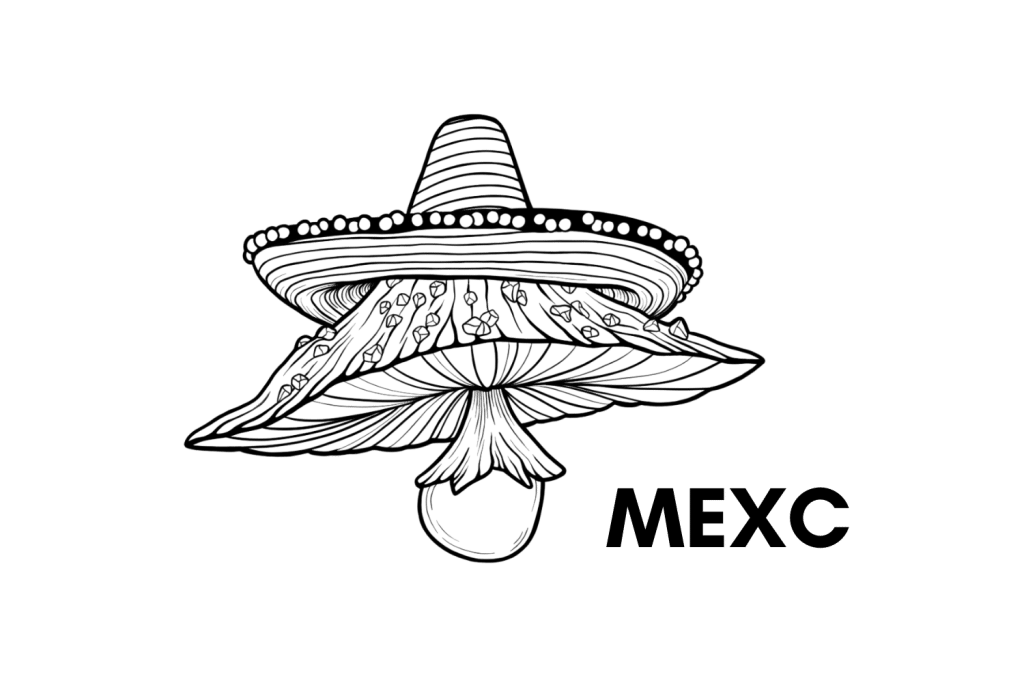
4. Mexicube (MC)
Mexicube is a relatively potent strain of P. cubensis that produces medium-sized fruits with golden caps and pure white stems. The caps are often covered with white spots similar to species such as Amanita muscaria, which gives the strain a unique appearance that sets it apart from others.
This strain is a notoriously aggressive colonizer that’s capable of producing several dense flushes before succumbing to mold growth. It can grow in an unoptimized environment, and even a beginner can see successful results through cultivation.
This is a good beginner strain and perfect for anyone looking to produce many mushrooms quickly.
Where to Buy Tapalpa Spores
The Tapalpa strain has been circulating the market for quite some time. Tapalpa spore samples are available from a range of reliable vendors in the United States, Canada, Europe, and the United Kingdom.
Here are some of our favorite vendors that offer Tapalpa or similar genetics:
- If you live in the United States — MYYCO, Spores 101, Miracle Farms
- If you live in Canada — Spores 101, Sporeslab, Planet Spores
- If you live in Europe — The Magic Mushrooms Shop (🇪🇺), Shiny Spores (🇬🇧)
→ View all spore vendors & grow kit suppliers
How to Grow Tapalpa Mushrooms
The Tapalpa strain is relatively easy to cultivate, even for beginners with very little knowledge or experience with growing mushrooms.
It can be grown using a simple cultivation method called PF-Tek.
PF-Tek involves the inoculation of sterilized substrate-filled jars with Tapalpa spores. The easiest and most hassle-free way to do this is with a spore-filled syringe.
Tapalpa can be successfully cultivated on most typical mushroom-growing substrates. However, the best result comes from BRF (brown rice flour) mixed with vermiculite or coco coir and vermiculite.
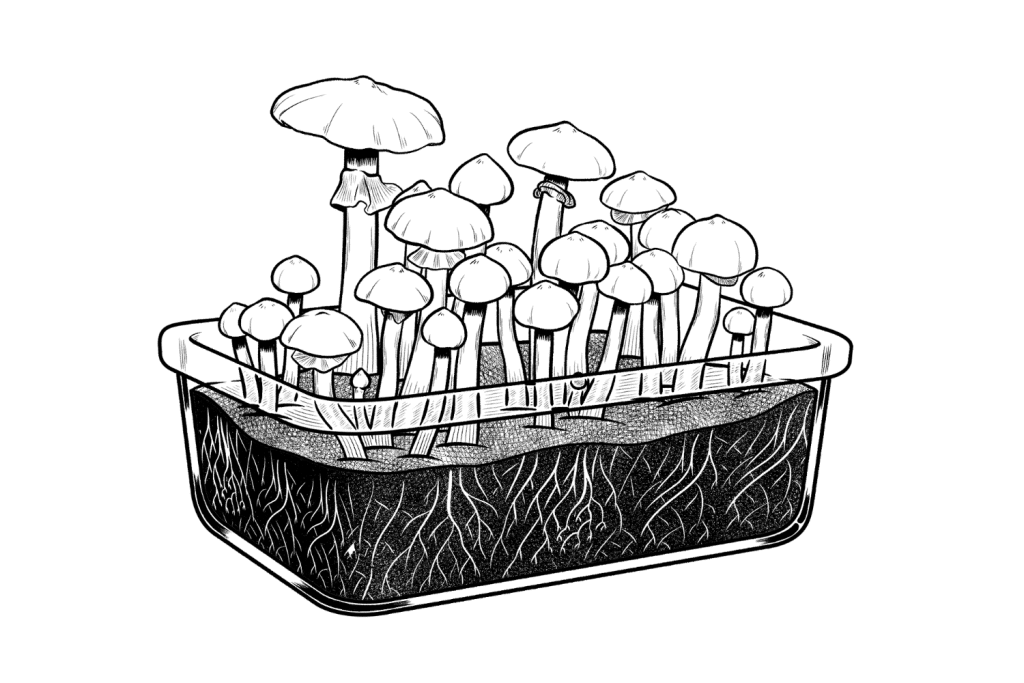
Once the jars have been inoculated with spores, they’re sealed and left to incubate in a warm, dark place. After two to three weeks, the substrate inside the jars should be completely colonized with mycelium.
The next phase is the exciting part of the process — fruiting.
The mycelium cakes inside the jars are removed and placed inside a fruiting chamber — a simple box that’s been adapted to provide a warm and humid environment suited for mushroom growth. This chamber should be kept between 73 and 82 degrees Fahrenheit (23 and 28 degrees Celsius).
Soon after being placed in the chamber, mycelium cakes will begin to sprout mushrooms. The mushrooms can be harvested from the cakes as they mature. The mycelium will continue to produce mushrooms until the colony eventually succumbs to mold.
This was a very basic rundown of the cultivation process. If you want to learn how to grow magic mushrooms effectively, read our cultivation guide.
Other Easy-to-Grow Beginner Strains
Tapalpa is an excellent choice for newcomers to the world of psilocybin mushroom cultivation. It’s contamination-resistant, colonizes quickly, and can be grown in an unoptimized environment. However, Tapalpa is one of many Psilocybe cubensis strains with these qualities.
Here are some other easy-to-grow strains for the beginner who wants to cultivate their first shrooms:
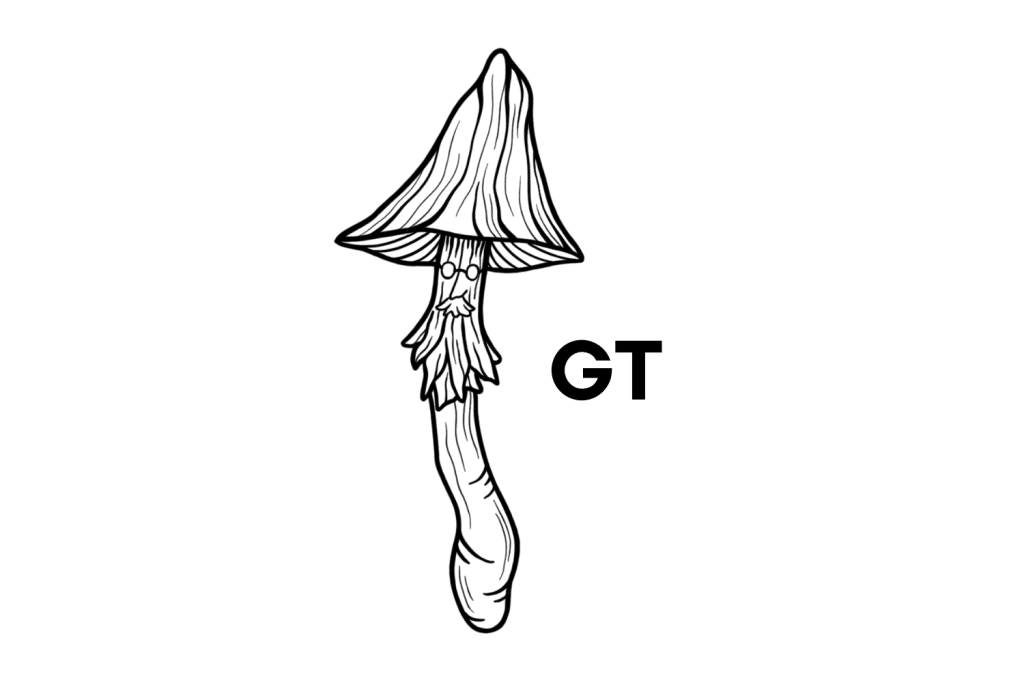
1. Golden Teacher (GT)
Golden Teacher is the most famous strain of Psilocybe cubensis. It’s popular for its contamination-resistant qualities, aggressive colonization habits, and ability to thrive in poor environments. These traits make it the perfect beginner strain, and it’s usually the first one new cultivators grow.
These genetics have been circulating the market since the early 80s. Although the origins of Golden Teacher have been lost with the passage of time, it’s believed the first sample was collected somewhere in the Gulf region of the United States.
This is a well-rounded strain with average to above-average potency (depending on how it’s grown). The fruits aren’t much to look at, but it’s definitely one of the easiest strains to cultivate for complete beginners.
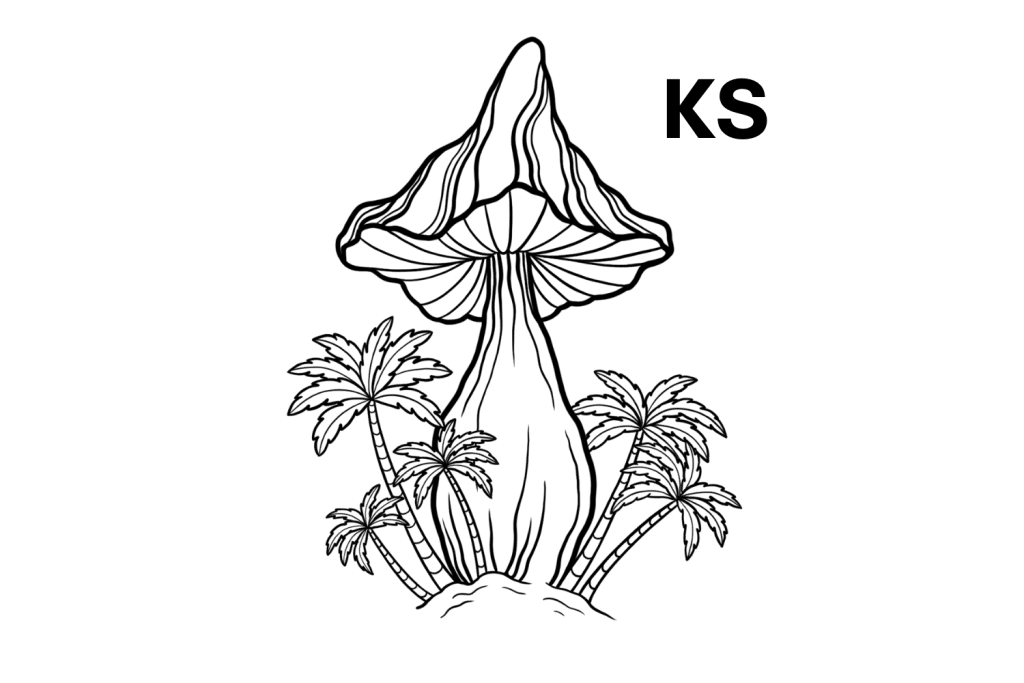
2. Koh Samui (KS)
Koh Samui was discovered and brought back to the West by the famous “Mushroom” John Allen during his travels through Southeast Asia in the 1990s. The strain was discovered on the island of Koh Samui — this is where it gets its name from.
The Koh Samui strain is famous for producing “fatasses” — mushrooms with short, fat stems. It is said to have more potency than average and can grow in less-than-ideal conditions because it is hardy and resistant to contamination.
This is a great beginner strain for someone who wants to start with something a little different from the norm.
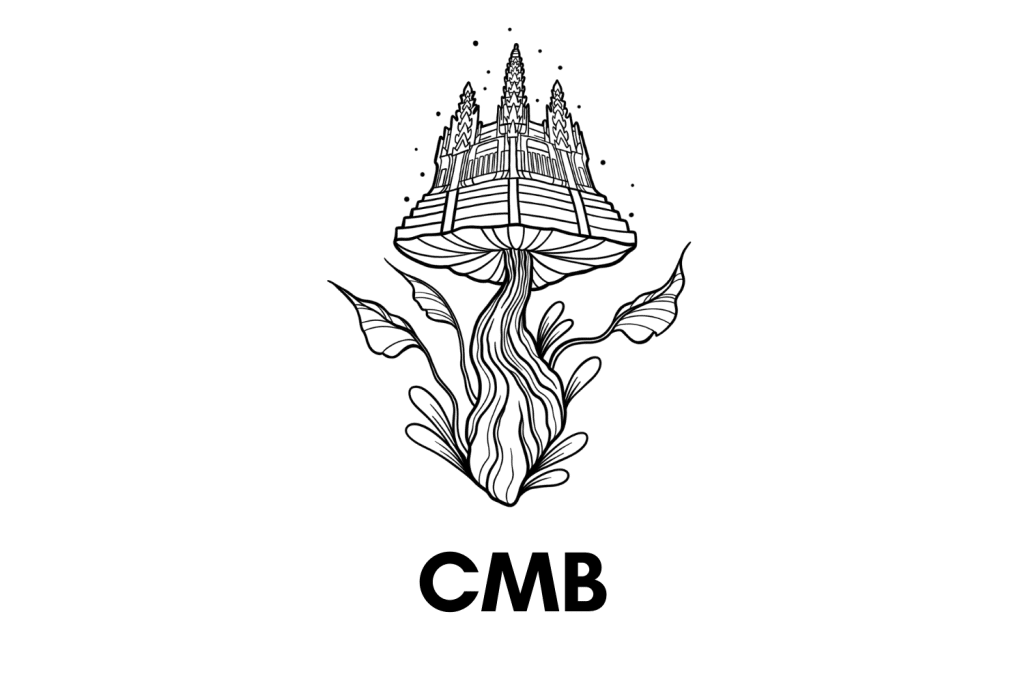
3. Cambodian (CMB)
Cambodian is another Southeast Asian strain that was discovered by John Allen in the 90s. The first sample was found growing near the temple of Angkor Wat. This strain is famed for producing highly dense flushes — making it perfect for the commercial grower or hobbyist looking to produce a decent amount of mushrooms.
Like most Southeast Asian strains, Cambodian is highly resistant to contamination and unoptimized growing conditions. It’s a great choice for the beginner, and the mushrooms produced have above-average potency.
Cambodian has medium-sized fruits with gold-brown caps and cream-colored stems. It’s a popular strain, and spores can be found for sale from various vendors across the globe.
Strains vs. Species: What’s the Difference?
Tapalpa is a strain of the species of psychedelic fungi Psilocybe cubensis.
P. cubensis is one of the hundreds of different psychedelic mushroom species that exist on our planet. It’s the most common psilocybin mushroom species on Earth, and it can be found growing in several different countries and environments. It’s also the most popular among cultivators because it can grow in an artificial environment easily.
Although P. cubensis mushrooms can be found across the globe, a sample from Thailand may look entirely different from one found in North America. This is because the Psilocybe cubensis species is made up of hundreds of different strains that all have unique qualities.
So what’s the difference between strains and species?
A species is a group of organisms that share the same characteristic traits on a biological level. Organisms within a single species can successfully breed or exchange genes to create fertile offspring.
A strain is a genetic variant within a species. Although two strains within a species may look completely different, the basis of their genetic makeup is the same. Two related strains can exchange genes or breed to create fertile offspring that share similarities with two sets of genetics.
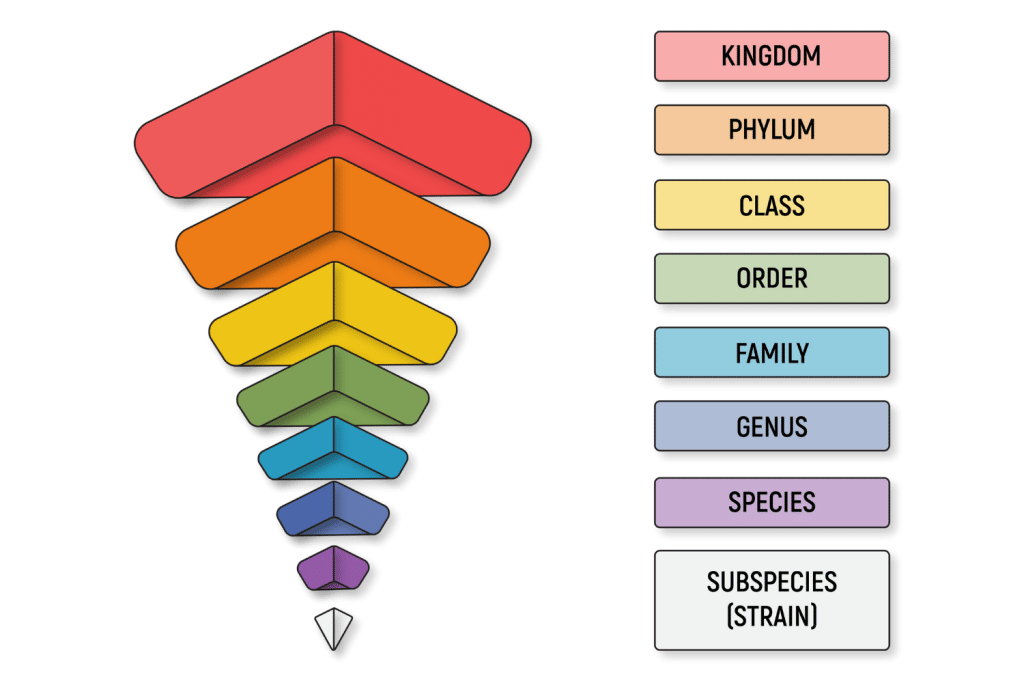
It’s not just Psilocybe cubensis that’s made up of a variety of different genetic variants. Strains are present throughout the fungi, plant, and animal kingdoms of Earth.
Many strains develop due to environmental factors. Genetic offshoots of a strain may appear through adaptation to climate and environmental differences. This is why a P. cubensis strain from one country may appear vastly different from a strain in another.
Other strains are created through selective breeding. Humans often take different genetic variants within a species and crossbreed them to create new strains. This is often done in agricultural practices to improve a crop’s resilience, yield potential, or desirable qualities.
It’s also done with animals, such as livestock that are better suited to certain farming situations, dogs that are better equipped for working roles, or fish that look more attractive in a pond.
Final Thoughts: Tapalpa Strain
The Tapalpa strain can be a fun shroom to try if you’re wanting to try growing your own. If you already grow them, add this one to your collection.
Even though its potency levels are unknown, it is a strong mushroom and was likely used long ago. Make sure you only buy spores from a reputable vendor, and you shouldn’t have much trouble.

